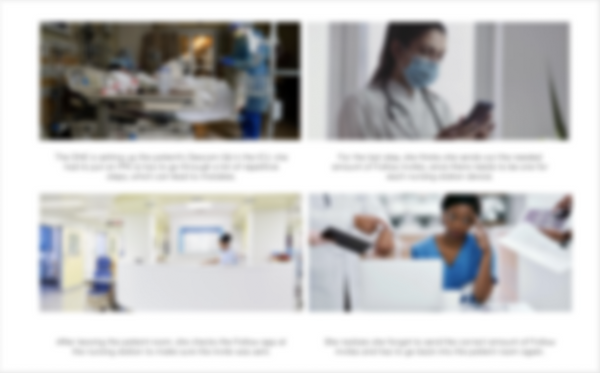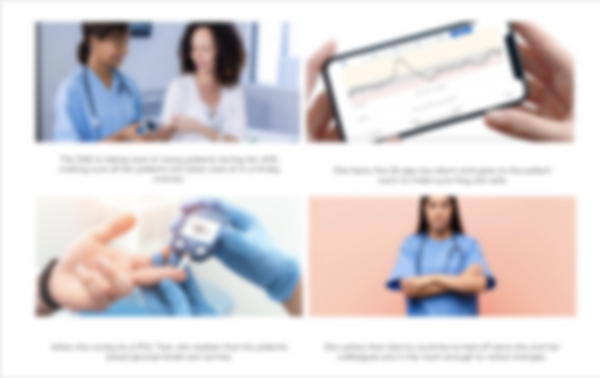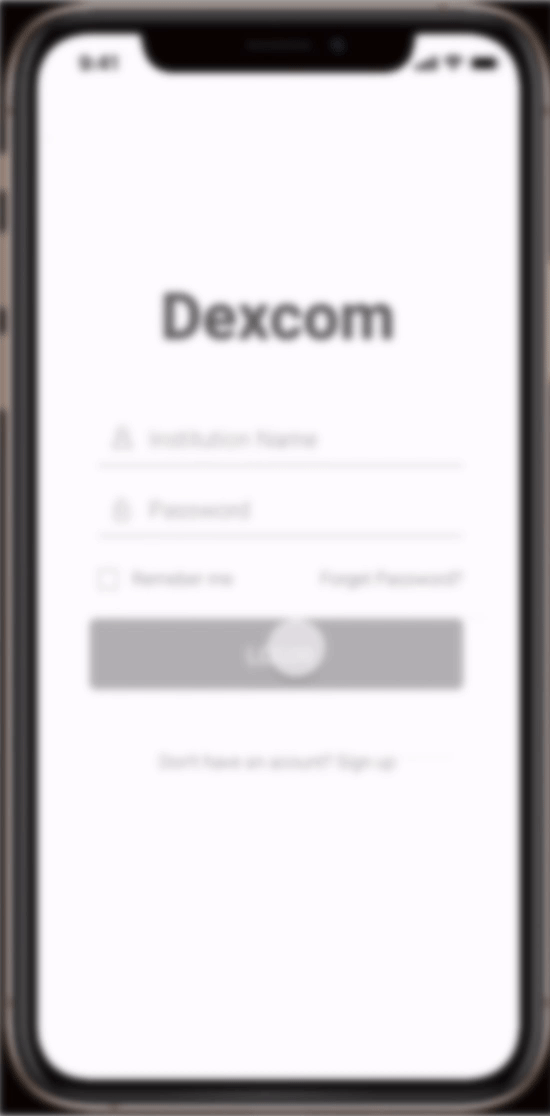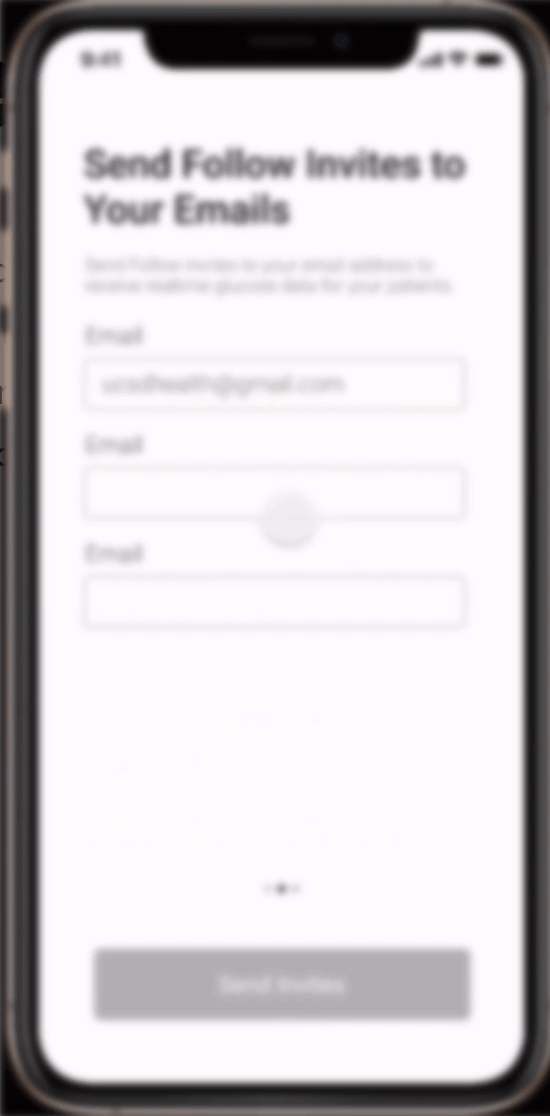UX/Product Designer
CGM in Hospital - Diabetes Design Initiative UCSD Design Lab x Dexcom Inc.
In order to reduce the direct exposure between COVID-19 patients and hospital practitioners, the FDA had allowed Continuous Glucose Monitors (CGMs) to be used in the ICU for diabetes management and remote monitoring. In this project, I worked closely with Dexcom product team to help Dexcom transfer and improve their CGMs, which was originally designed for household usage, to hospital Intensive Care Units (ICU).

Design Methods
Design Software
Interviews, Empathy Map, Card Sorting, etc.
Figma, Miro
Year
2021
Problem
Since healthcare is a field that is new to me, my team and I spent a lot of time at the beginning of the project to learn about CGMs and diabetes-related expertise, such as how insulin and CGMs are used and their effects. Based on the research, we understood that CGMs was originally designed for outpatient use, and the hospital ICU environment can be much more complex than the outpatient settings, causing the use of CGM to be problematic in the hospital.
How might we improve the CGM experience for Medical Professionals in order to increase CGM adoption in hospitals?


User Interviews
To better understand health practitioners' pain points and needs when using CGMs in the hospital settings, my team and I decided to interview the primary users, endocrinologists and diabetes nurse educators in local hospitals. I wrote and iterated the interview guides for endocrinologists and diabetes nurse educators. I utilized design methods, such as card sorting, in the interviews to ask endocrinologists and diabetes nurse educators to rate the priorities of different functions of the CGMs. After interviewing all the endocrinologists and diabetes nurse educators in the local hospital, I created user persona and found that the user pain points were mainly focused on the mandatory onboarding process and the alert system.

Storyboards & Workflows
We created storyboards to visualize the scenario of health practitioners using CGMs in the hospital based on the interview responses. Through these storyboards we started to sort out the step-by-step workflow and found design space in the onboarding and setting up the alerts process.
*Due to NDA, I wouldn't be able to share the details of solutions & workflows.


Storyboards showing health practitioners using CGMs in the ICU settings.


Work Flow Diagrams showing the step-by-step process of using CGMs from onboarding to discharging
Design & Iteration
To find the best solution for simplifying the onboarding process and the alert system, we individually created paper prototypes to visualize the functionalities we designed for endocrinologists and diabetes nurse educators. We came together to evaluate the solutions we developed and integrated our solution into a new set of workflow for CGMs in the hospital setting.


Paper Prototypes
New Workflow with Low-fidelity Prototypes
User Testing
My team and I decided to conduct user tests with health practitioners using low-fidelity prototypes to see if our solutions were effective. I transformed our ideas and solutions into wireframes in Figma and set up 4 different scenarios and several user tasks to guide health practitioners to testify the new workflow.
Based on the feedback we received, we iterated our design and transferred the wireframes into final high-fidelity prototypes and presented the final design solution to 30+ stakeholders from Dexcom team in the final presentation.


User Tests with Low-fidelity Prototypes
Final Prototype
Through this project, we hope healthcare providers can have a more trusting and seamless experience with the CGMs in the inpatient setting. Within the last round of user testing with the caregivers, we had increased the product satisfaction rate from 33% (2 out of 6 users marked it “satisfied”) to 100% (6 out of 6 users marked it “satisfied”) through qualitative research. At the final presentation, we received a lot of positive feedback from the Dexcom product team.
“Great content but also one of the presentations I’ve seen! Clear, engaging, interactive, and no ‘wall of text’ kind of slides. Well done!” —— Dima, Dexcom Product Team
“This is a better presentation than what I’ve seen from our own hospital team.”” —— Apurv, VP of Product


Final High-fidelity Prototypes
Final High-fidelity Prototypes